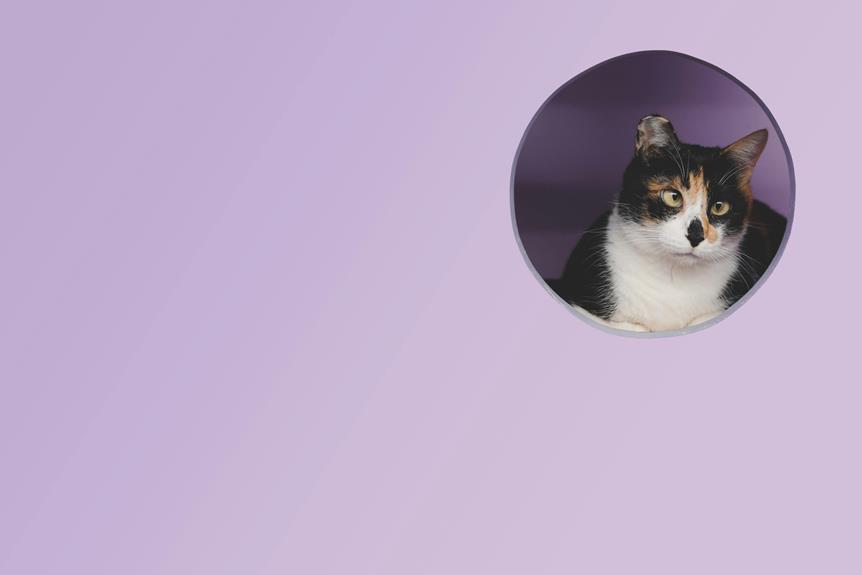
When selecting the right litter and litter box for your cat, prioritize factors like your living space, your cat's preferences, and the type of litter materials for your cat's well-being. Consider clumping clay for easy cleaning, silica gel crystals for odor control, and features like high sides to prevent scatter. Remember to maintain a clean litter box regularly for your cat's health and happiness. More insights on maintaining a suitable cat litter setup await you.
Factors to Consider Before Choosing
Before selecting the litter and litter box for your cat, carefully assess your living space and your cat's preferences to ensure a comfortable and suitable choice. Consider the size of your home and where you plan to place the litter box. Cats prefer privacy when using the litter box, so choose a quiet and accessible location. Additionally, if you have multiple cats, ensure there are enough litter boxes to avoid territorial issues.
When it comes to litter box styles, open trays are common and provide easy access for your cat. However, if your cat prefers privacy or tends to kick litter around, consider covered litter boxes. These enclosed options can help contain odors and prevent litter scatter. Remember to choose a litter box that's large enough for your cat to comfortably move around in.
As for litter types, consider your cat's preferences. Some cats prefer clumping litter for easy cleaning, while others may prefer non-clumping varieties. Also, keep in mind any sensitivities your cat may have to scented litters. By considering these factors, you can select the right litter and litter box to keep your cat happy and your home clean.
Types of Litter Materials
When selecting litter materials for your cat, consider the various options available to provide the best comfort and hygiene for your feline friend. The most common types of litter materials include clumping clay, silica gel crystals, recycled paper, pine, and wheat.
Clumping clay is popular for its ability to form solid clumps when wet, making it easier to scoop out waste. Silica gel crystals are known for their excellent odor control and absorbency. Recycled paper litter is biodegradable and gentle on your cat's paws. Pine litter has a natural scent that helps neutralize odors. Wheat litter is environmentally friendly and flushable.
Each type of litter material has its own characteristics, so it's essential to consider your cat's preferences and any sensitivities they may have. Some cats may prefer softer textures, while others may be sensitive to scents. Experiment with different types of litter to see which one your cat prefers and which works best for your household.
Litter Box Features to Look For
Consider features such as size, accessibility, and cleanliness when choosing a litter box for your cat.
The size of the litter box is crucial; it should be large enough for your cat to move around comfortably and dig without feeling cramped. A box with high sides can help prevent litter from being kicked out during digging.
Additionally, consider the accessibility of the litter box, especially for older cats or kittens. A box with a lower entry point or a ramp can make it easier for them to get in and out.
Look for a litter box that's easy to clean to ensure your cat has a hygienic space. Litter boxes with removable liners or lids that can be easily lifted off can simplify the cleaning process.
Keep these features in mind when selecting a litter box to provide your cat with a comfortable and clean environment for their restroom needs.
Tips for Maintaining a Clean Litter Box
To keep your cat's litter box clean and odor-free, regularly scoop out waste and clumps of soiled litter. This simple task should be done at least once a day, if not more frequently, depending on how many cats you have and the type of litter you use. Remember to replace any removed litter with a fresh supply to maintain the proper depth.
In addition to scooping, it's essential to completely change the litter and wash the litter box with mild soap and water on a regular basis. How often you do this will depend on the number of cats using the box and your chosen litter type. A full litter change is typically recommended once a month for one cat, but it may be necessary more frequently for multiple cats.
Consider using litter box liners or mats to make cleaning easier and prevent waste from sticking to the bottom of the box. These can also help contain any odors and reduce the need for frequent deep cleanings. Regular maintenance of your cat's litter box is crucial for their health and well-being, so make it a part of your routine.
Conclusion
When choosing the right type of litter and litter box for your cat, consider factors such as your cat's preferences, the ease of cleaning, and the odor control.
Explore different litter materials and look for litter boxes with features that suit your cat's needs.
By selecting the right combination, you can ensure your cat's comfort and maintain a clean litter box environment.




